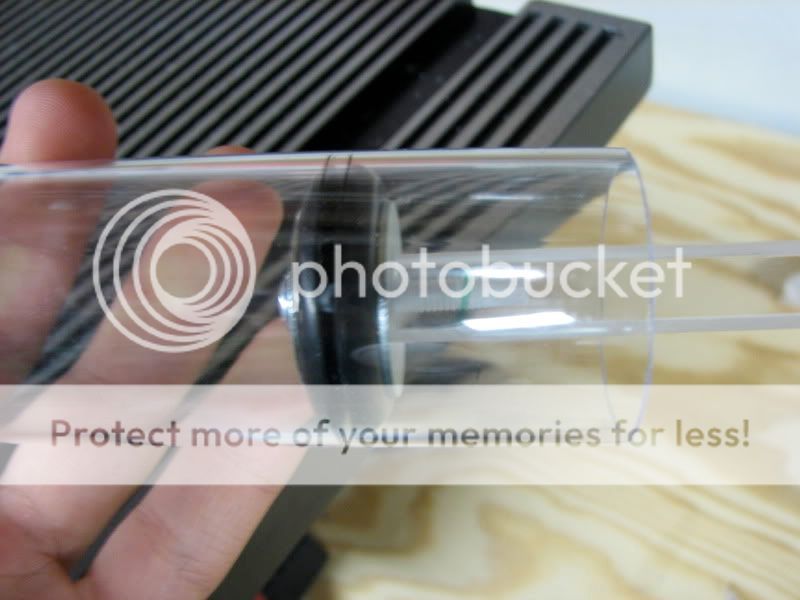I was going to wait and post a more comprehensive review later, but you covered some of the points, so I'll just make it short here and now.
So far, I've tried these on 6 guns - pumpbow, 3 +bows and two RTPs. Results are varying.
First off, the price point is a huge bonus for me. I bought 25 skirt seals to revert all of my (and friends and customers') guns, and just so I wouldn't run out (easier and cheaper than ordering individually, thanks to the lax return policy). That runs about $120 right there. For the equivalent amount of skirts, I got $110 back in my pocket. I am very pleased with that. Those prices include the washers for the grommets and not for the skirts, as well.
Installation of the grommets has been overall pretty easy. I've been using #8 washer ID, 1 1/4" OD metal washers, and they've been working ok for this purpose. I mainly want to switch to 1" OD, since that allows me to switch to #6 ID, keeping them from shifting much more. I haven't had the issue you're describing about them shifting side to side - the friction from the washers combined with the plunger tube keeps them in place plenty. Your method would likely make it easier to initially center though.
These seals need a hell of a lot more lube. Whereas skirts need little initial lube, these need a heaping fingertip full. Skirts also almost never need to be relubed (8 months and counting on the initial one with no new lube and moving smoothly). Two of my blasters with grommets needed to be slightly lubed after one war, so they'll more likely be about 2-3 wars per lube. Not a big issue, just something to watch out for.
The seal - the important part. Overall, it's finicky. I experimented with how much they had to be tightened, and there's not much of a pattern to what makes the best seal with it. I used calipers to measure the OD to make sure they were all the same on all of the guns, but it didn't really correlate to the performance as much as you'd think. Two of the +bows were modified to hit full compression, so they had the most energy, followed by my pumpbow, then the rtps, then the standard +bow last. Same size plunger tube from the same source, usually cut from the same large tube, yet it was an even half and half on seal quality.
The pumpbow and one of the modified +bows were the ones used at a war with the grommets, and, initially, the seal didn't seem that great. I tightened/squished it to the first point where it became too tight to move without difficulty*, then loosened it just a bit. Once fully assembled, I couldn't stop or even slow the plunger head with my hand or barrel stopper (end cap on pvc with adjustable vents) like I normally can with a skirt. Oddly though, after the war, the +bow plunger could be slowed substantially, yet the pumpbow still couldn't.
Overall, the seal has been hit or miss. I wouldn't call it 90-95%; more like 60% sometimes and 90% others, optimistically. I never got it quite to the skirt's level. That said, I'll probably still generally use them. The trade off is more work (centering, tightening, lubing, maintaining, possibly breaking them in) for a 90+% reduction in cost. If you're working on something with lower efficiency (smaller plunger tube, weaker spring) and you're trying to get as much power as possible (as opposed to, for instance, intentionally inhibited sidearms), go with a skirt. Otherwise, there's a strong argument for the grommet.
Some other notes to consider:
Skirts expand more consistently, but grommets come in many more sizes. Neither are designed to expand their OD, but if you need an extra 1/16" od from a skirt, insert (forcibly) a spacer with and OD of the skirt's ID + 1/16". It has worked really well up to about 1/8", at which point the skirt OD just starts to deform. Skirt ODs vary about 1/4" per item number, but that's not a reliable way to pick one.
The cost of polycarb and the time spent making little circular washers for the skirts wasn't taken into consideration, though it's not quite negligible.
*At this point, the friction would stop the plunger .5-1.5" short of normal travel, depending on the spring compression at those points, which varied by gun.
Yeah, this is the shortened version.
Edited by Split, 21 July 2010 - 11:44 PM.
Teehee.


















